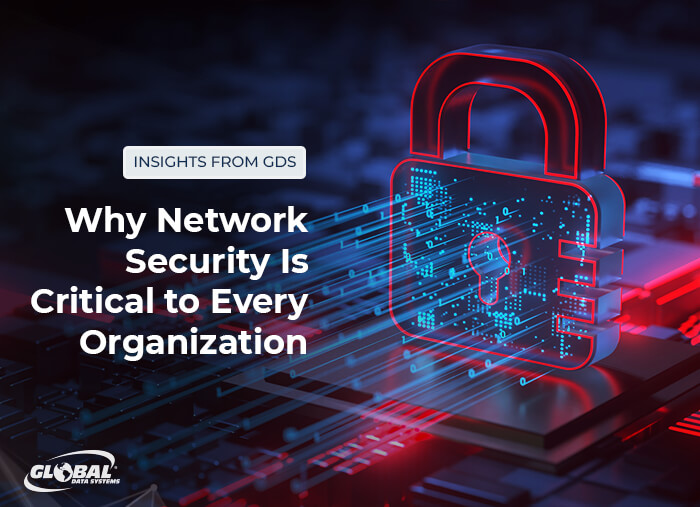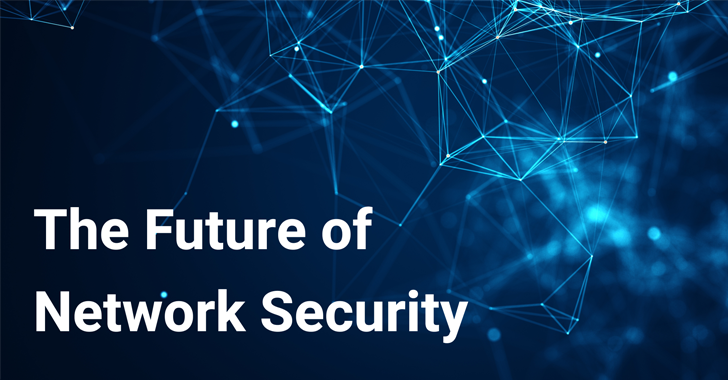FFT Perimeter Intrusion Solutions: Comprehensive Security Measures for Modern Enterprises
FFT Perimeter Intrusion Solutions: Comprehensive Security Measures for Modern Enterprises
Blog Article
Just How Data and Network Security Secures Versus Arising Cyber Threats
In an era marked by the fast development of cyber dangers, the relevance of data and network safety and security has never ever been a lot more obvious. Organizations are increasingly dependent on sophisticated safety actions such as file encryption, accessibility controls, and aggressive monitoring to guard their digital assets. As these dangers become extra intricate, recognizing the interplay in between information safety and security and network defenses is important for minimizing dangers. This conversation intends to check out the crucial components that fortify an organization's cybersecurity position and the approaches necessary to stay ahead of potential susceptabilities. What continues to be to be seen, nevertheless, is exactly how these measures will certainly evolve in the face of future challenges.
Understanding Cyber Dangers

The ever-evolving nature of technology constantly presents brand-new susceptabilities, making it vital for stakeholders to stay alert. Individuals may unwittingly come down with social engineering strategies, where assailants adjust them right into revealing sensitive details. Organizations face unique difficulties, as cybercriminals often target them to make use of beneficial data or interrupt procedures.
Moreover, the rise of the Web of Points (IoT) has actually expanded the assault surface area, as interconnected tools can serve as entrance points for opponents. Recognizing the relevance of durable cybersecurity techniques is crucial for reducing these dangers. By cultivating a thorough understanding of cyber risks, individuals and organizations can implement effective techniques to protect their digital assets, guaranteeing durability when faced with a progressively complicated risk landscape.
Key Components of Data Security
Ensuring data security calls for a complex technique that includes different essential components. One fundamental component is information file encryption, which transforms delicate details right into an unreadable style, accessible just to accredited individuals with the suitable decryption keys. This works as an essential line of protection against unapproved accessibility.
One more vital part is gain access to control, which regulates who can see or adjust information. By executing rigorous individual authentication methods and role-based gain access to controls, organizations can decrease the danger of expert dangers and data violations.

In addition, information concealing methods can be utilized to safeguard sensitive information while still enabling its usage in non-production settings, such as screening and advancement. fft perimeter intrusion solutions.
Network Safety And Security Techniques
Executing robust network protection approaches is necessary for securing an organization's digital framework. These methods include a multi-layered approach that consists of both software and hardware solutions made to secure the integrity, discretion, and accessibility of data.
One critical part of network safety and security is the deployment of firewall programs, which act as an obstacle between trusted interior networks and untrusted external networks. Firewall softwares can be hardware-based, software-based, or a combination of both, and they aid filter incoming and outward bound web traffic based upon predefined safety rules.
In addition, intrusion discovery and prevention systems (IDPS) play a crucial role in keeping an eye on network traffic for questionable activities. These systems can inform managers to potential violations and act to alleviate risks in real-time. On a regular basis upgrading and patching software is likewise crucial, as vulnerabilities can be manipulated by cybercriminals.
Furthermore, carrying out Virtual Private Networks (VPNs) ensures protected remote accessibility, securing data transferred over public networks. Segmenting networks can decrease the assault surface area and have possible breaches, limiting their impact on the general facilities. By embracing these approaches, companies can effectively fortify their networks against emerging cyber risks.
Best Practices for Organizations
Establishing finest practices for companies is vital in keeping a strong safety and security position. A thorough approach to information and network protection starts with normal risk evaluations to recognize susceptabilities and potential risks. Organizations must apply robust gain access to controls, ensuring that only licensed employees can access delicate data and systems. Multi-factor authentication (MFA) must be a typical demand to enhance safety and security layers.
Furthermore, continual worker training and understanding programs are essential. Employees should be informed on recognizing phishing attempts, social design methods, and the significance of adhering to protection methods. Regular updates and spot monitoring for software and systems are also important to secure versus known vulnerabilities.
Organizations have to evaluate and create occurrence response prepares to guarantee preparedness for potential violations. This consists of developing clear interaction channels and functions throughout a protection occurrence. Information file encryption ought to be utilized both at rest and in transportation to secure delicate details.
Last but not least, performing routine audits and conformity checks will certainly assist make sure adherence to appropriate policies and recognized policies - fft perimeter intrusion solutions. By following these ideal practices, organizations can significantly enhance their resilience against emerging cyber hazards and safeguard their important assets
Future Trends in Cybersecurity
As companies navigate an increasingly intricate electronic landscape, the this hyperlink future of cybersecurity is poised to progress considerably, driven by moving and emerging modern technologies danger standards. One noticeable fad is the integration of expert system (AI) and machine understanding (ML) into protection structures, permitting for real-time threat detection and action automation. These innovations can evaluate vast amounts of information to identify anomalies and potential violations a lot more effectively than conventional methods.
Another critical pattern is the increase of zero-trust style, which needs continual confirmation of customer identities and device security, regardless of their area. This technique reduces the risk of expert risks and enhances defense against exterior assaults.
In addition, the raising fostering of cloud services demands robust cloud protection methods that deal with one-of-a-kind i loved this vulnerabilities related to cloud atmospheres. As remote work comes to be a permanent component, securing endpoints will certainly also come to be critical, bring about an elevated concentrate on endpoint detection and action (EDR) solutions.
Finally, regulatory compliance will certainly continue to form cybersecurity practices, pushing companies to adopt a lot more rigorous data defense steps. Welcoming these trends will be crucial for organizations to strengthen their defenses and browse the evolving landscape of cyber dangers effectively.
Conclusion
In final thought, the application of durable information and network protection actions is important for organizations to protect against emerging cyber risks. By using file encryption, gain access to control, and efficient network protection approaches, companies can dramatically lower susceptabilities and shield delicate details. Taking on finest methods additionally improves durability, preparing organizations to face evolving cyber obstacles. As cybersecurity remains to advance, remaining notified about future trends will be critical in keeping a solid defense against possible hazards.
In an age marked by the quick development of cyber threats, the value of data and network protection has never ever been a lot more pronounced. As these dangers become extra complicated, recognizing the interplay between information safety and network defenses is important for mitigating dangers. Cyber threats include a wide variety of destructive activities intended at compromising the privacy, honesty, and schedule of networks and data. A thorough method to information and network security begins with normal risk evaluations to recognize vulnerabilities and prospective hazards.In conclusion, the application of durable information and network security procedures is crucial look at here now for organizations to secure versus arising cyber threats.
Report this page